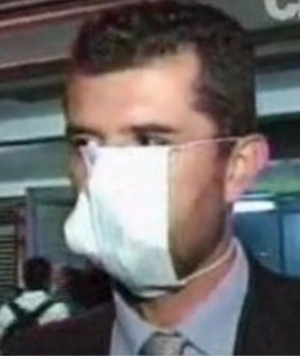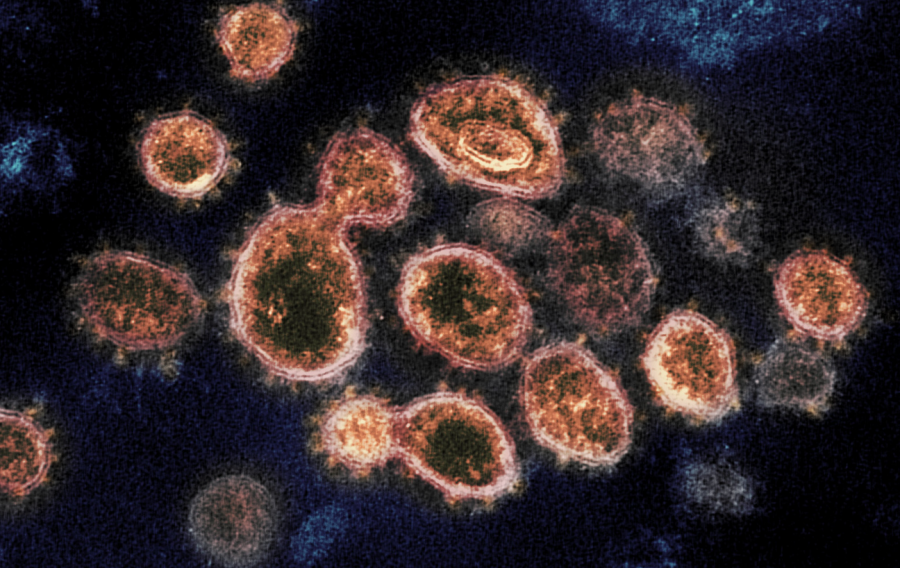Coronavirus: Explained
March 3, 2020
In late December 2019, a form of coronavirus broke out in Wuhan, China. The virus caught worldwide attention in early January, when Chinese authorities confirmed that it is a novel, or new, disease (You can read the condensed timeline here). So far, there are no medications that will cure or prevent this form of coronavirus.
This variation inflames the respiratory system, so you should look out for coughing and shortness of breath. Symptoms may surface from two days to two weeks after exposure, and how long it takes to recover from it depends on the person.
Here’s what you need to know:
Myth: There is only one kind of coronavirus. You hear the term coronavirus everywhere you go. But what’s in a name?
Fact: There are 7 kinds of coronaviruses — as far as we know. Coronavirus is actually an umbrella term that encompasses seven pathogens that cause anything from benign colds to pneumonia. Chances are, you’ve probably had coronavirus at one point or another.
Here are the four types of coronaviruses that usually result in the common cold:
- 229E
- NL63
- OC43
- HKU1
The more concerning types of coronaviruses are:
- MERS-CoV — (aka Middle East Respiratory Syndrome)
- SARS-CoV — (aka Severe Acute Respiratory Syndrome)
- SARS-CoV-2 — (aka Coronavirus Disease 2019, or COVID-19 for short)
In other words, we are talking about COVID-19.
Myth: Products from China are contaminated with COVID-19.
Fact: Coronaviruses usually don’t survive that long on inanimate objects. Here is what the CDC has to say:
“While we don’t know for sure that this virus will behave the same way as SARS-CoV and MERS-CoV, we can use the information gained from both of these earlier coronaviruses to guide us […] Currently there is no evidence to support transmission of COVID-19 associated with imported goods and there have not been any cases of COVID-19 in the United States associated with imported goods.”
Myth: If you live on the East Coast, you don’t have to worry about COVID-19. COVID-19 has disproportionately affected people who live in China. If you live in the East Coast, you can say that you’re marked safe from COVID-19, right?
Fact: COVID-19 keeps on spreading. According to a CNN article (aptly titled “CDC official warns Americans it’s not a question of if coronavirus will spread, but when”), COVID-19 is just around the corner. Dr. Nancy Messoneir, the director of CDC’s National Center for Immunization and Respiratory Disease, warns that COVID-19 will soon spread across the United States: “It’s not so much a question of if this will happen anymore, but rather more a question of exactly when this will happen and how many people in this country will have severe illness.” Keep reading to find out what you can do to protect yourself.
Myth: Disposable surgical masks provide adequate protection from COVID-19. There has been a surge in mask purchases around the world. Will that disposable earloop surgical mask from CVS do the trick?

Fact: It takes a little more than that. If you see your favorite celebrities or a random ad on Facebook advertising face masks, take it with a grain of salt. Experts warn that masks aren’t significantly helpful in preventing COVID-19.
Now, those who already have COVID-10 should wear masks to prevent transmitting the virus to other people. Healthcare professionals who come in close contact with patients are also advised to wear masks. They use a special mask called N95, and they undergo training on how to wear it properly.
But if you’re an average Joe or Jane who doesn’t have COVID-10, wearing a mask on your part won’t make that much of a difference.
Instead, knuckle down on the following preventative measures, which will yield better protections—both for COVID-19 and for other illnesses, such as the flu:
Lather up, and dry off. When washing your hands, be thorough. You should always use soap, and lather for twenty seconds, paying attention to the backs of your hands, between your fingers, and under your nails.
Leave your face alone. Rubbing your eyes, nose, or mouth is a surefire way to let germs enter your body. Is that itch you want to scratch worth getting sick over? Likewise, keep your hands away from wounds.
Travel smart. You might want to postpone leaving the country. Be sure to check out the travel advisory. Even if you are traveling to a Level 1 area, airplanes can be a hotbed for viruses: there a lot of people concentrated in an airplane, but the conditions of previous passengers are another important consideration.
Disinfect. Disinfect. Disinfect. Germs gang up on frequently-touched objects, such as doorknobs and elevator buttons. Keep wipes and sprays in handy. You can find a list of disinfectants that may combat COVID-19 here.
Myth: You are more likely than not to die from COVID-19. Over 2,000 people worldwide have died from coronavirus so far. But how likely are you to die from coronavirus?
Fact: A multitude of factors contribute to COVID-19 mortality. It’s safe to say that the chances are low. In a study of 72,314 confirmed cases, only 2.3 percent of patients succumbed to the disease.
That being said, you should pay extra attention if you’re immunocompromised or have a chronic illness. In The Scientist article “Why Some COVID-19 Cases Are Worse than Others”, Katarina Zimmer writes:
“While less than 1 percent of people who were otherwise healthy died from the disease, the fatality rate for people with cardiovascular disease was 10.5 percent. That figure was 7.3 percent for diabetes patients and around 6 percent for those with chronic respiratory disease, hypertension, or cancer.”
If you think you have contracted COVID-19, let your doctor know ASAP. Although there is no cure for COVID-19 so far, it is important to monitor your health so it doesn’t escalate, and to allow your body to recover on its own.
Myth: COVID-19 is manmade. Some people, particularly conservative pundits, speculate that COVID-19 was created in a Chinese laboratory. Is that true, though?
Fact: Probably not. Experts think that COVID-19 originates from bats. COVID-19’s molecular makeup resembles those of other coronaviruses found in bats. Although bats cannot directly transmit coronaviruses to humans, they can pass them to other animals, who may in turn pass them on to humans.


